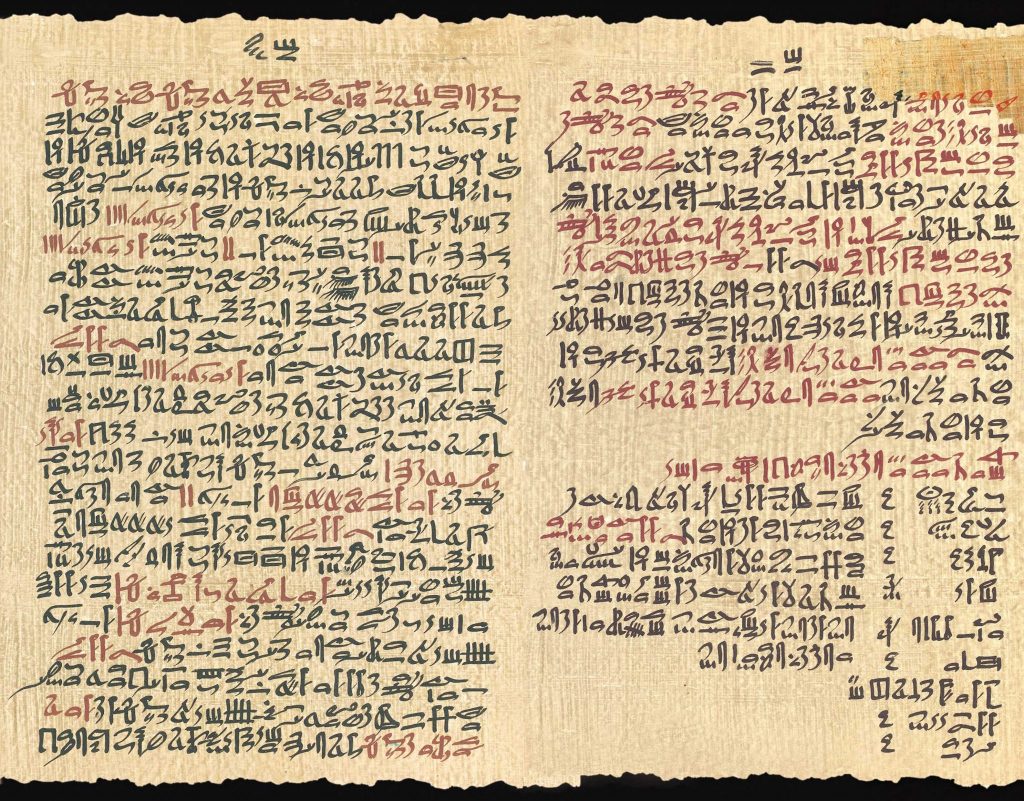In ancient Egypt, perfumes were costly and typically restricted to the wealthy. Considering the cost and rituals perfumes were associated with, perfumes were usually worn by clergy, royalty and the extremely wealthy.
In ancient Egypt, perfumes were considered the sweat, spittle or bones of the gods. Although bodily fluids from other humans were considered impure, those from the gods were considered sacred and a source of blessings. The most popular and earliest recorded perfume from ancient Egypt is the kyphi. One of the discovered earliest references to kyphi was found in a pyramid text which dates back to the fifth and sixth dynasties of ancient Egypt. Kyphi is the Latin version of the Greek transcription of the Egyptian word, Kapet.
There are many recipes and formulas for preparing kyphi. Some of these recipes involved ingredients as few as sixteen while others involved ingredients as much as fifty herbs and spices. Usually, Kyphi recipes consisted of frankincense, myrrh, mastic, pine resin, cinnamon, wine, honey, raisins, terebinth, resin, saffron, juniper, mint and other secret herbs and spices.

Uses of Kyphi.
Kyphi was quite rare and expensive because it was gotten from the land of Punt. Kyphi was primarily used as incense burnt to honor the God in temples.With regards to rituals and status, pharaohs aimed for the luxury of non-stop enjoyment of kyphi in the afterlife. The presence of the scent of kyphi in the mummification process was sufficient to determine the noble status of the dead.
Kyphi was a regular feature in medications treating a variety of illnesses and it was also consumed by elites to cleanse the body. Additionally, the perfume was thought to facilitate restful sleep with vivid dreams. So, it was usually burnt in households in the evenings. Kyphi was used to purify a home and to give clothes, hair, and breath a pleasant aroma as well.
Kyphi recipes
a. Rufus’ recipe:
To prepare the kyphi, Rufus of Ephesus (circa 50AD) directs that the honey and raisins should be mashed together. Then the bdellium and myrrh should be ground with wine until the mixture has a consistency of runny honey. Combine with the honey and raisin mixture mashed earlier. Grind other ingredients and add to the mixture and stir until it is evenly mixed. Form the incense into pellets for burning. This mixture was an acclaimed remedy for snakebite and to purify temples.
Ingredients: raisins, wine, honey, burnt resin, bdellion, camel grass, sweet flag, cyperus grass, saffron, spikehard, aspalathos, cardomom, cassia.
b. Dioscorides’ recipe
Dioscorides (circa 100AD) found a recipe which directs that the raisins, wine and myrrh should be ground together. The remaining ingredients (except for honey and resin) are ground together and added to the earlier mixture. The resulting mixture should be left to steep for one day. The resin is then melted slowly with the honey and then ground into the first mixture. This was an acclaimed remedy for asthma.
Ingredients: sun raisins, old wine, honey, myrrh, pure resin, juniper berries, sweet flag, camel grass, aspalathos, cyperus grass.
c. The Syriac recipe
Ingredients: raisins, wine, honey, frankincense, myrrh, spikehard, crocus/saffron, mastic, aspalathos, cinnamon, cassia.

